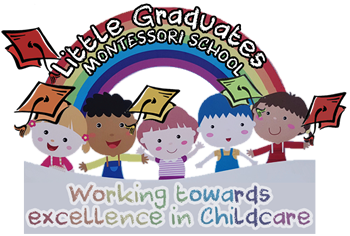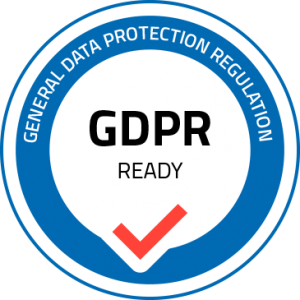This website uses cookies so that we can provide you with the best user experience possible. Cookie information is stored in your browser and performs functions such as recognising you when you return to our website and helping our team to understand which sections of the website you find most interesting and useful.
The role of the key person and settling in
4.1 The role of the key person and settling-in
Policy statement
LGMS believe that children settle best when they have a key person to relate to, who knows them and their parents well, and who can meet their individual needs. We are committed to the key person approach which benefits the child, the parents, the staff and the setting. It encourages secure relationships which support children to thrive, give parents confidence and make the setting a happy place to attend or work in.
LGMS want children to feel safe, stimulated and happy in the setting and to feel secure and comfortable with our staff. LGMS also want parents to have confidence in both their children’s well-being and their role as active partners with our setting. LGMS aim to make our setting a welcoming place where children settle quickly and easily because consideration has been given to the individual needs and circumstances of children and their families.
The key person role is set out in the Safeguarding and Welfare Requirements of the Early Years Foundation Stage. Each child must have a key person. These procedures set out a model for developing a key person approach that promotes effective and positive relationships for children.
Procedures
- We allocate a key person within the first two weeks of a child starting.
- The key person is responsible for (or in their absence the room leader):
- Providing an induction for the family and for settling the child into our setting where possible.
- Ensuring (with the room leader) that there is completion of relevant forms with parents, including consent forms.
- Explaining (in conjunction with the room leader) our policies and procedures to parents with particular focus on policies such as safeguarding and our responsibilities under the Prevent Duty.
- Offering unconditional regard for the child and being non-judgemental.
- Discussing with parents the child’s development and any issues that arise with the parents and to plan and deliver a personalised plan (as far as possible) for the child’s well-being, care and learning.
- Acting as the key contact for the parents (unless the room leader decides otherwise).
- Developmental records and for sharing information on a regular basis with the child’s parents to keep those records up-to-date, reflecting the full picture of the child in our setting and at home.
- Having links with other carers involved with the child and co-ordinating the sharing of appropriate information about the child’s development with those carers.
- Encouraging positive relationships between children in her/his key group, spending time with them as a group each day.
- LGMS promote the role of the key person as the child’s primary carer in our setting, and as the basis for establishing relationships with other adults and children. However, all staff in the room are expected to work with all the children in order for the child to access all the skills that staff have to offer. No child should work entirely with their key person to the detriment of their learning. If the key person is away ill or on holiday every child should be confident in the company of all the staff in the room.
Settling-in
- Before a child starts to attend our setting, LGMS use a variety of ways to provide his/her parents with information. These include written information (including our prospectus and policies), displays about the topic and planning activities available within the setting, information days and evenings and individual meetings with parents.
- During the week before a child is due to start, LGMS provide opportunities for the child and his/her parents to visit the setting.
- The key person welcomes and looks after the child and his/her parents at the child’s during the settling-in process.
- LGMS use the first of these two pre-start visits which a child attends to explain and complete, with his/her parents, the child’s all about me booklet and other relevant documentation.
- LGMS have an expectation that the parent, carer or close relative, will stay for most/all of the first settling in session and then leave them in the nursery for the second hour settling in. If the child does not settle the room leader may decide to offer another one hour settling in session (flexibility is key).
- Younger children may take longer to settle in, as will children who have not previously spent time away from home. Children who have had a period of absence may also need their parent to be on hand to re- settle them.
- LGMS judge a child to be settled when they have formed a relationship with their key person; for example, the child looks for the key person when he/she arrives, goes to them for comfort, and seems pleased to be with them. The child is also familiar with where things are and is pleased to see other children and participate in activities.
- When parents leave, LGMS ask them to say goodbye to their child and explain that they will be coming back, and when.
- LGMS recognise that some children will settle more readily than others, but that some children who appear to settle rapidly are not ready to be left. LGMS expect that the parent will honour the commitment to stay for at least the first week, or possibly longer, until their child can stay happily without them.
- LGMS do not believe that leaving a child to cry will help them to settle any quicker. LGMS believe that a child’s distress will prevent them from learning and gaining the best from the setting.
- LGMS reserve the right not to accept a child into the setting without a parent or carer if the child finds it distressing to be left. This is especially the case with very young children.
- Within the first two weeks of starting, LGMS discuss and work with the child’s parents to begin to create their child’s record of achievement.
The progress check at age two
- The key person carries out the progress check between the child’s second and third birthday in accordance with any local procedures that are in place and referring to the guidance ‘Progress Check at Age 2’ on the gov.uk website
- The progress check aims to review the child’s development and ensures that parents have a clear picture of their child’s development. It considers a professional judgement and careful observation, the voice of the child, the views of the child’s parents, views of any other professionals such as GPs or health visitors, if appropriate
- Within the progress check, the key person will note areas where the child is progressing well and identify areas where progress is less than expected.
- The progress check will identify any areas of concern or where progress is not as expected, so that parents, practitioners and other professionals such as speech and language therapists, physiotherapists or dieticians can put appropriate support in place
- We help parents to understand their child’s needs and enhance their child’s development at home
- We invite parents to share their unique knowledge about their child, family and culture
- The key person will plan activities to meet the child’s needs within the setting and will support parents to understand the child’s needs in order to enhance their development at home.
| This policy was adopted by | LGMS | (name of provider) |
| On | 1st September 2022 | (date) |
| Date to be reviewed | September 2023 | (date) |
| Signed on behalf of the provider | Shauna Fosker | |
| Name of signatory | Shauna Fosker | |
| Role of signatory (e.g. chair, director or owner) | Senior Manager | |
Other useful Pre-school Learning Alliance publications
- Statutory Framework for the Early Years Foundation Stage: With non-statutory supporting documentation (2014)
- Being a Key Person in an Early Years Setting (2015)
- Creating a Learning Environment in the Home (2015)



